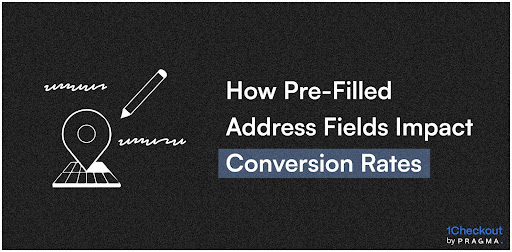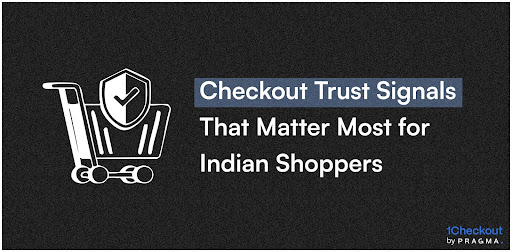The Rise of ‘Buy Now Pay Later’

What is Buy Now, Pay Later (BNPL)?
BNPL stands for "Buy Now, Pay Later", which is a type of financing option that allows customers to purchase items and pay for them in instalments over time, rather than paying the full amount upfront. This type of payment option is often offered by online retailers and can be a convenient and flexible way for consumers to make purchases without having to pay the full amount at the time of purchase.
How does Buy Now, Pay Later (BNPL) work?
The popularity of BNPL (Buy Now Pay Later) has been on the rise in recent years, driven by several factors:
- Increased Demand for Flexible Payments: BNPL provides customers with a flexible payment option that allows them to purchase items and pay for them in instalments over time. This has become increasingly appealing to consumers as they look for ways to manage their finances and make purchases without dipping into their savings or taking out loans.
- Growth of Online Shopping: The growth of e-commerce and online shopping has created a greater demand for BNPL. With more consumers shopping online, BNPL has become a convenient way for them to make purchases without having to pay the full amount upfront.
- Technological Advancements: The development of technology has made BNPL easier to implement and use. BNPL providers now offer easy integration with e-commerce platforms, making it simple for businesses to add this option to their checkout process.
As a result of these factors, BNPL has become an increasingly popular way for consumers to make purchases and manage their finances, and is expected to continue to grow in the future.
The Growth and Impact of BNPL is Evident!
- Market size:
The global BNPL market was valued at $7.3 billion in 2019 and is expected to reach $33.6 billion by 2027, growing at a CAGR of 21.2% from 2020 to 2027.
The Indian BNPL market was estimated to be worth around $500 million in 2020 and is expected to reach $2.7 billion by 2023. - Consumer adoption:
According to a survey by PYMNTS, 42% of U.S. consumers used BNPL at least once in 2020, up from 36% in 2019.
According to a survey by YouGov, around 38% of Indian consumers have used BNPL services, with the majority being in the age group of 18-34 years. - Merchant adoption:
The adoption of BNPL services by Indian merchants is growing, with several leading e-commerce platforms, including Amazon, Flipkart, and Myntra, offering BNPL options to their customers.
It is found that 60% of merchants offer BNPL services, with another 20% planning to add them in the near future. - Impact on credit card usage:
According to a survey by CRED, 66% of Indian consumers who use BNPL services have reduced their credit card usage. - Millennial adoption:
According to a survey by Credit Karma, 42% of millennials have used BNPL services, compared to 24% of Gen Xers and 8% of baby boomers. - BNPL providers:
There are several BNPL providers operating in the Indian market, including international players such as PayPal and Afterpay, as well as domestic companies like ZestMoney, LazyPay, and Simpl. - Usage patterns:
According to a report by RedSeer Consulting, the majority of BNPL transactions in India are for purchases under Rs. 5,000, with fashion and electronics being the most popular categories. - Growth potential:
With a large and growing middle class, rising disposable incomes, and increasing smartphone and internet penetration, the Indian BNPL market is expected to continue growing rapidly in the coming years.
Buy Now Pay Later and India
BNPL (Buy Now Pay Later) has been gaining popularity in India in recent years. The concept of BNPL in India can be traced back to the early 2000s, when a few local companies started offering this payment option to consumers.
However, it was not until the rise of e-commerce and the increasing popularity of online shopping that BNPL gained widespread recognition in India.
In recent years, international BNPL companies such as Klarna, Afterpay, and ZestMoney have entered the Indian market and are partnering with Indian e-commerce companies to offer BNPL services to consumers. These companies use technology, such as machine learning and artificial intelligence, to evaluate the creditworthiness of customers and offer them BNPL options at checkout.
The BNPL industry in India is expected to grow rapidly in the coming years as more consumers adopt online shopping and seek alternative payment options - with a growth of 23% in just 1 year (from 2021 to 2022), the growth is projected to be over 30% of online consumers using BNPL by the end of 2024.
The Indian government has also been supportive of the BNPL industry, recognizing its potential to provide financial inclusion to millions of underbanked consumers in the country.
This growth has been driven by a number of factors:
- Increased Demand for Digital Financial Services: With a rapidly growing population of internet users and smartphone users, there has been a corresponding increase in demand for digital financial services, including BNPL.
- Growing Middle Class: India has a growing middle class with increasing disposable income, which has created a greater demand for consumer goods and services, including BNPL.
- Increased Awareness of BNPL: As more businesses adopt BNPL and more consumers use it, awareness of this payment option has increased in India.
- Government Support: The Indian government has taken steps to encourage the growth of digital financial services, including BNPL, through measures such as reducing taxes and regulatory barriers.
Following this interest, several companies operating in the BNPL (Buy Now Pay Later) space entered the Indian market.

Some of the top players include:
- ZestMoney: An AI-powered digital lender that offers BNPL services to customers in partnership with leading e-commerce companies.
- Simpl: A fintech company that offers BNPL services to customers, allowing them to buy now and pay later for their purchases.
- LazyPay: A digital lending platform that provides BNPL services to customers, allowing them to make purchases without a credit card or upfront payment.
- Kissht: A fintech company that offers BNPL services to customers in partnership with leading e-commerce companies, allowing them to make purchases without a credit card or upfront payment.
- EarlySalary: A fintech company that offers BNPL services to customers, allowing them to access quick and easy personal loans for their purchases.
Others would include - CRED, Paytm First Credit, FlexiLoans, MoneyTap, and PayLater by Pine Labs
Advantages of BNPL for Merchants:
- Increased Sales: BNPL can increase the average transaction value, as customers are more likely to make a purchase if they can pay for it in instalments rather than paying the full amount upfront.
- Attracts New Customers: Offering BNPL can attract new customers who might not otherwise make a purchase, either because they do not have the cash available or because they prefer to spread the cost over time.
- Increased Customer Loyalty: BNPL can increase customer loyalty, as customers are more likely to return to a business that offers them flexible payment options.
- Competitive Advantage: By offering BNPL, a business can differentiate itself from competitors and stand out in a crowded marketplace.
- Improved Cash Flow: BNPL allows customers to spread the cost of their purchases over time, which can improve the business's cash flow and reduce the risk of defaulted payments.
- Easy Implementation: BNPL providers offer easy integration with e-commerce platforms, making it simple for businesses to add this option to their checkout process.
- Reduced cart abandonment: BNPL can reduce cart abandonment rates as customers are more likely to complete a purchase when they have a flexible payment option available at checkout.
- Convenient for Customers: BNPL is a convenient and flexible payment option for customers, as they can make purchases without having to pay the full amount upfront.
- Increased brand visibility: By partnering with BNPL providers, merchants can increase their brand visibility and reach a wider customer base.
- Access to customer data: BNPL providers often collect data on customer spending habits and behaviours, which merchants can use to improve their marketing and customer engagement strategies.
Advantages of BNPL for shoppers:
- No interest or fees: Many BNPL services offer interest-free payments, which can be a big advantage for consumers who want to spread the cost of a purchase without incurring additional fees. Some BNPL providers may charge fees or interest, but these are usually lower than those charged by credit cards or other loan products.
- Budget management: BNPL can help consumers manage their budgets more effectively, as they can spread the cost of a purchase over several weeks or months. This can be especially helpful for larger purchases that might otherwise be difficult to pay for all at once.
- Credit building: BNPL can also help consumers build or improve their credit score. When consumers use BNPL responsibly, by making payments on time and in full, they can demonstrate their creditworthiness to lenders, which can make it easier to get approved for credit in the future.
- Personal loans: Some BNPL providers also offer personal loans, which can be used for a variety of purposes. These loans are typically offered at competitive rates and can be used to cover large purchases or unexpected expenses.
Last but not least… the level of protection offered by BNPL..
Security measures that BNPL provides
- Encryption: BNPL providers use encryption to protect sensitive data, such as credit card numbers, passwords, and other personal information. Encryption scrambles the data so that it can only be read by authorised parties.
- Two-factor authentication: Many BNPL providers use two-factor authentication to verify the identity of users. This involves requiring users to enter a password and a unique code sent to their phone or email.
- Dispute resolution: BNPL providers have dispute resolution procedures in place to help consumers resolve any issues related to unauthorised charges or fraudulent activity. This can include providing refunds, reversing charges, or investigating any suspicious activity.
- Compliance with regulations: BNPL providers must comply with regulations and standards that govern the handling of sensitive financial information. For example, they may be required to comply with Payment Card Industry Data Security Standards (PCI DSS) or General Data Protection Regulation (GDPR) regulations.
How to Reduce the Risk of Buy Now, Pay Later Fraud?
Apart from the general security protocol followed by BNPLs, brands can go a step further to protect themselves and their customers against fraud. How? Let us explain with a couple Pragma features inbuilt in our 1Checkout.
- Verify the identity of the customer:
Take steps to verify the identity of the customer by cross-referencing with past purchases and verifying purchases across 450+ brands to authenticate. - Monitor transactions:
Brands should be equipped to monitor individual consumers’ transactions for any signs of fraud.
Such as multiple transactions from the same device or IP address, unusually large purchases, or purchases from high-risk locations. - Implement fraud prevention tools:
Implement fraud prevention tools such as Address Verification Service (AVS), Card Verification Value (CVV), and 3D Secure to verify the identity of the customer and prevent fraudulent transactions. - Use machine learning:
Let the algorithms analyse customer data and detect any fraudulent behaviour. This can help to identify suspicious activity and prevent fraudulent transactions.
(Note: A huge plus with Pragma would be → The data from 450+ brands; that’s 15 Lakh+ orders handled every month)
In conclusion
The Rise of ‘Buy Now Pay Later’ is here.
BNPL is becoming more and more the staple for Ecommerce Businesses, with the flexibility it provides while providing utmost security as well.
Pros and Cons of BNPL
Pros
- Simple and convenient way to pay
- No interest/lower interest compared to credit cards
- Good/High credit score is not necessary to qualify
Cons
- Late payments result in late fees
- Temptation to overspend might be a problem






